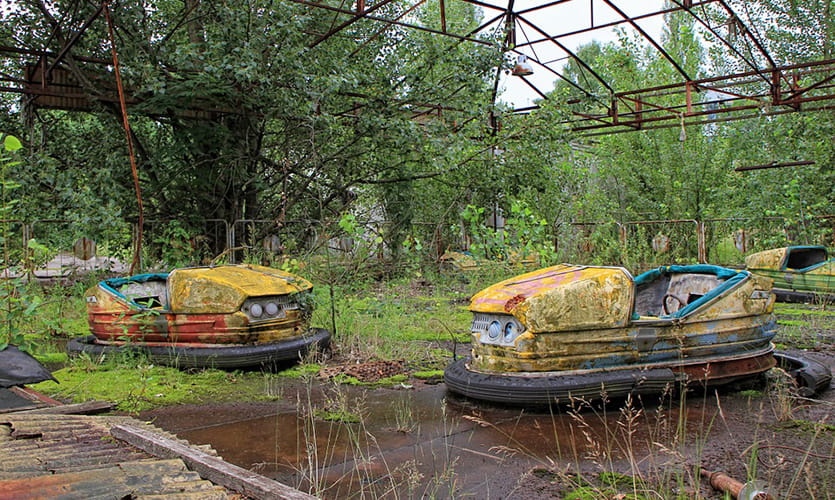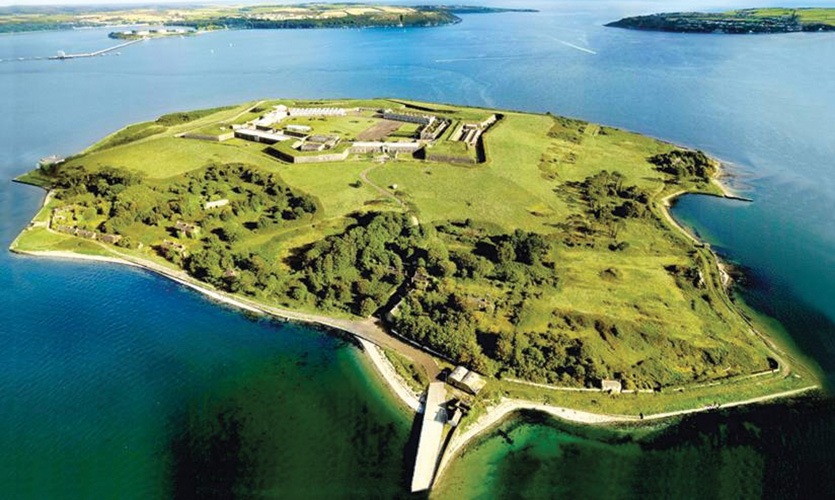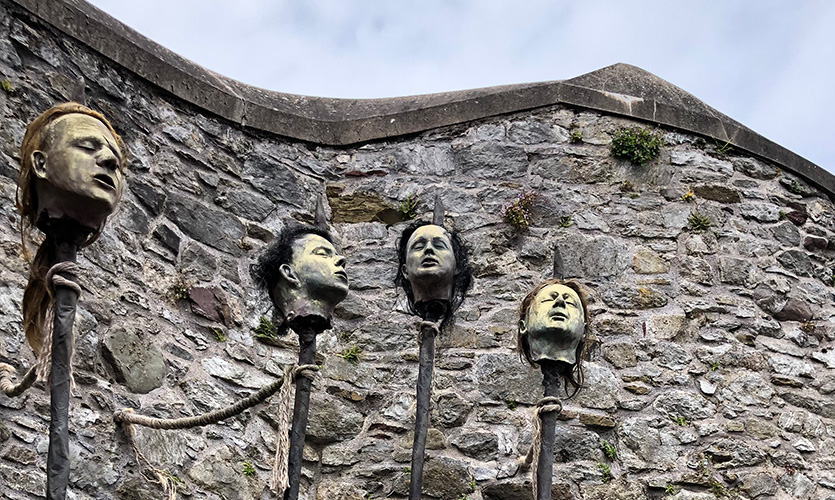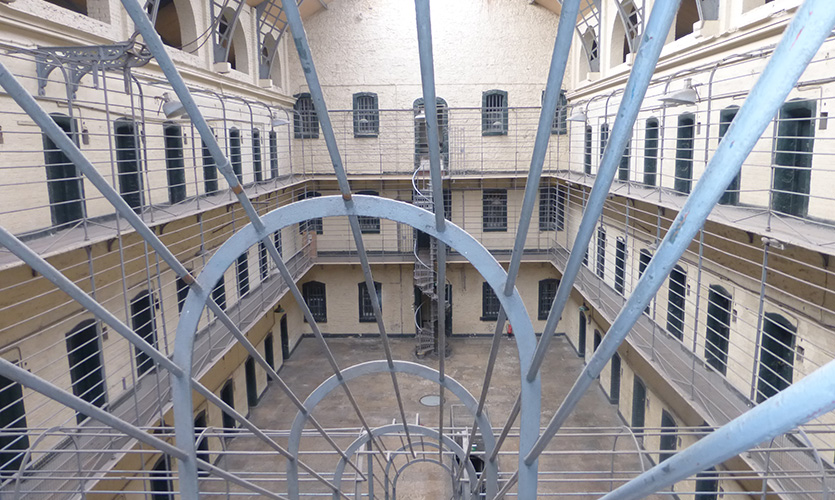Alcatraz, Auschwitz, Chernobyl…the appeal of dark tourism
Alcatraz, Auschwitz, Chernobyl…the appeal of dark tourism
Is dark tourism just another fad in the age of the selfie and tick list travelling? Gillian O’Brien explains its appeal and gives it historical context.

Across the world, sites associated with death, suffering and disaster are attracting increasing numbers of visitors. Each year over two million people visit the concentration camp of Auschwitz-Birkenau, over 300,000 make the trip to Robben Island to see Mandela’s former cell and about 1.3 million visitors step off the ferry onto Alcatraz Island. Chernobyl, with 10,000 visitors per year, is the latest addition to the dark tourist bucket list, with its potential risk of radiation exposure seemingly not a deterrent.
But despite its increasing appeal, tourism of this nature is not a new phenomenon according to Gillian O’Brien, a researcher of dark tourism and Reader in Modern Irish History at LJMU. People have been visiting sites associated with death, suffering, incarceration and execution for their entertainment for centuries. The popularity of public executions during the eighteenth and nineteenth centuries comes to mind. Gillian suggests some examples:
“Madame Tussaud made a career out of grisly spectacles, opening her first Chamber of Horrors in London in 1802. In the US, dime museums were a mix of educational museum and freak show, attracting customers by exhibiting paraphernalia of torture. And in Ireland, people have been visiting the vaults in St. Michan’s Church in Dublin to take a look at the mummified bodies since the early nineteenth century – one of its most famous visitors is said to be Bram Stoker.”

Aerial shot of Spike Island – Ireland’s own Alcatraz.
Gillian’s fascination for dark tourism began with her involvement in the development of former prisons such as Spike Island and Kilmainham Gaol. Her interest was also born out of research for her book Blood Runs Green: The Murder that Transfixed Gilded Age Chicago, about the murder of Dr Patrick Cronin in Chicago in 1889. Following his murder, the seemingly insatiable public desire to learn as much as possible about the crime was catered for as the cottage where he was murdered was opened to the public. Gillian explains: “For a dime, visitors could visit the cottage and for another dime they could take a souvenir of a blood-stained chip of wood from the floor (little did visitors know that the floor was actually a replica and the number of wood chips that were sold would have built several cottages).”
So what is it about these macabre settings that attract people?
“I think there are a myriad of reasons people are attracted to them. Different sites attract different types of visitor. Some sites, particularly those associated with the holocaust, places such as Auschwitz-Birkenau are similar in ways to sites of pilgrimage where visitors go to pay their respects to the millions who died in the concentration camps.
“Other locations are popular largely because many people are curious with the past and have a particular fascination with stories associated with crime and punishment, or out of a curiosity to see how people lived (and died) in places such as workhouses and prisons. I think there’s also a curiosity about the sites themselves and very often the buildings are key to attracting the visitor, particularly when sites such as forts, prisons and workhouses were previously inaccessible to the public.”
Is there an element of the supernatural that captures people’s imagination, do people want to be spooked?
“Some sites certainly play up stories of the paranormal, and most (though not all) of the sites I’ve visited have some ghost story or other that they mention.”

Elizabeth Fort, Cork © Gillian O’Brien.
What about more recent sites of tragedy, like Ground Zero, why do people visit these places?
“I think people are drawn to sites of tragedy. Some go to try and make sense of it, some go to pay homage to those who died, and some go just out of curiosity, or to say that they’ve been.”
What are some of the ethical concerns with dark tourism?
“This partly depends on who owns and runs the sites, and on the commercial pressures. Some are under more pressure to turn a profit than others. In terms of prisons, where my particular experience lies, there is an inevitable temptation to emphasise the sensational elements of the story among the most commercial prison sites.
“Ghoulish interest might lure many tourists, but most sites make significant efforts to contextualise their history. While websites may emphasise gruesome executions, daring escapes and famous prisoners, visitors to the sites get a much more nuanced experience in most cases. After all, there are always other stories to tell, and it is important not to forget that many of those imprisoned were guilty of the crimes they were charged with, and that those crimes had victims.”

Inside Kilmainham Gaol, Ireland © Gillian O’Brien.
Of the sites you’ve visited, which has left an impression on you?
“Kilmainham Gaol. The gaol occupies a unique, sanctified space in the Irish imagination and identity. It’s a prison which held many Irish nationalist heroes, from key figures associated with the 1798 Rebellion to Young Irelanders and Fenians to Charles Stuart Parnell. Most significantly, as the site of execution of many of the leaders of the 1916 Easter Rising.
“I didn’t know any of that when I first visited as a small child. All I recall is being fascinated by the building itself and I have a very clear memory of hearing the story of Anne Devlin (she was the housekeeper for Robert Emmet, a key organiser of the failed 1803 Rebellion, and she was imprisoned by authorities who misguidedly thought that they could force her to reveal the whereabouts of Emmet). I remember the guide pointing out her cell (and being very disappointed when, years later, I discovered that they didn’t actually know what cell she was in).
“I’ve been back numerous times since, either bringing students with me, or later working on incorporating the neighbouring courthouse into the gaol’s visitor experience.”
Gillian continues to visit dark tourism locations across Ireland – taking in everything from former prisons to famine ships, graveyards to battle sites – to discover how the country's dark past is being packaged for visitors. Find out more about her work by visiting her blog – while you’re there take a look at her newly published report on best practice for site-specific museums. You can also listen to Gillian talk about dark tourism on Today FM.
Students on Gillian’s course are given the opportunity to examine what, how and why the past is remembered; to explore how events like the Irish famine are interpreted by later generations through art, literature, memorials and heritage sites.
If you’re interested in studying history, take a look at the courses on offer at LJMU.


